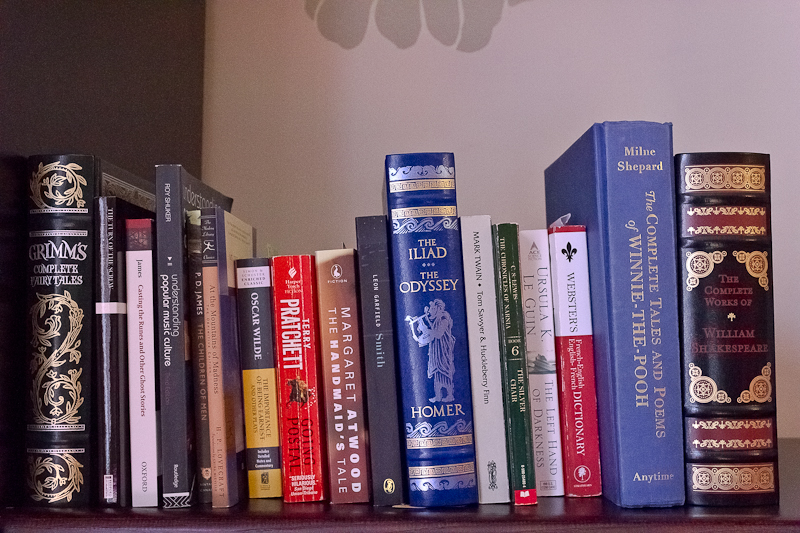Books have been around for hundreds of years. From specialized pieces only the rich could read, to a widespread wealth of knowledge after the invention of the printing press, books have been a cherished part of society as a main source of insight. However, today we find ourselves in the upswing of a new revolution—a technological revolution.
Now book lovers can carry their entire personal library in their pocket or over their shoulder. Instead of having a cumbersome load, all they need is one small device. Whether it is a general e-reader, or a form of e-books on a phone, this century’s oldest source of insight can now be accessed in the excess at the tips of your fingers. It would make sense that physical books are declining in value and popularity, but many people now wonder if books themselves will become completely obsolete.
A digital age
“This is not the first time that people have or are talking about the end of books,” Carleton communications professor Lina Shoumarova said. Shoumarova teaches a course called ‘Books in the Digital Age,’ which focuses on the relevance of physical books in contemporary culture.
“Every time a new technology comes along, there’s a general sentiment coming from somewhere,” she said. “Some people think it’s going to endanger reading and that it’s going to endanger the deeper way in which we get knowledge from books,” she explained.
Shoumarova said the invention of other technologies in recent history has also caused people to fear for the future of books.
“When the radio and television came along some people thought that it was going to be the end of deep reading and would completely displace the book,” she pointed out.
“This obviously hasn’t happened. The same thing happened again in the ‘90s with the internet picking up,” she said.
To kill a paperback
However, though books themselves might remain relevant, business owners are still seeing the financial effects of new technologies on the sale of the physical book.
Grant Purdy is the owner of The Book Gallery, located just south of Ottawa.
“Eight used bookstores and four new bookstores have gone out of business in the past three years in Ottawa. And the world’s largest chain Borders went out of business three years ago after trying to promote e-reading,” Purdy said.
He said The Book Gallery, which is one of Canada’s largest used bookstores, is facing bankruptcy, with a 40-50 per cent minimum decline in sales in the past few years.
Purdy pointed out that the e-book is not the only new technology affecting physical book sales. Sites like amazon.com are also changing the value of physical books, he said.
“One thing it’s really hurting is the antiquarian book business,” Purdy explained. “There was a guy that once brought in a book here that was published in 1887. It was a leather bound edition of the first book ever written in North America on billiards . . . we put it up for about $700 . . . one of the reasons why we didn’t put it up at $1000, closer to what it was worth which was probably closer to $2000, is because somebody at the public library had a copy and they had made copies of it, which you could buy for $32. On the Internet there were at least 10 of those copies for sale,” he said.
“There are two reasons why someone would want an antiquarian book,” Purdy explained. “One of them is that they actually want the information in it, and the other thing is there’d be an addition to collecting all of their books. In this case the information was available for $32 which caused us trouble, so therefore we asked less for it,” he said.
Cost and convenience
When initially introduced, e-books could be bought at about half the price of regular wholesale books, adding to the appeal of these convenient devices. But as popularity has grown, e-books have come to the same price.
In a May 28, 2013 press release, Indigo Books and Music commented on the growth of e-book reading and how it has impacted sales.
“Revenue for the fiscal year ended March 30, 2013 was $893 million compared to $934 million last year, a decline of 4.4%. The decline was primarily due to lower physical book and eReader sales,” the press release stated.
Despite this decline, Indigo continues to promote the sale of e-books, announcing a newly designed line of Kobo e-readers in an August 2013 press release.
“From what I’ve seen lately, [e-books] are basically just as expensive for the most part,” Corey Hogg, geophysicist and e-book user said. “I remember reading a year ago about a book somebody found that was actually cheaper in paper than it was as an e-book.”
Prices might be rising but e-readers remain popular. There are several reasons for the appeal of this new way of reading.
The main reason is convenience.
Stay-at-home mom and blogger Brenda Drew, another e-book user, said she initially bought her e-book for going away on trips so she could bring a number of books without having to bring a physical pile of them.
She said she now uses her e-reader all the time because she likes the immediacy and the reduced cost.
“I can get brand new books, so I won’t have to wait another year until the book goes into paperback edition,” she explained.
A tale of two mediums
Other opportunities the e-reader presents are ruling out physical books as well.
“Some publishers are experimenting with the so called multimedia books,” said Shoumarova. “Those are books that have not only text, but also videos embedded, or images. For example, having interviews with the authors, or extra information like alternative endings or what really went in to the writing of the books.”
Shoumarova said books may eventually encompass pictures and clips from the movie adaptions, further linking the world of changing media communications. With the rise in the interest of convenience and the idea of multi-faceted technology, comes the decline in older ways of doing things and thinking.
However, the Internet can also be used as a means of benefitting books.
Shoumarova commented on the faster means of sharing with e-readers and the Internet.
“It creates a larger reading community,” she said. “In fact, some of the very exciting developments with e-readers and online reading is the idea of readership . . . the communication between readers is much faster and in greater numbers.”
The question still remains, whether or not physical books will survive in the future.
“I think they’re going to flatten out,” Purdy said, noting the loss of many significant customers. “We have several people who used to buy from us regularly who have gone away,” he said.
Purdy also noted that publishing companies are already catering to younger readers by marketing e-books over paper books.
“For example, we carry Star Wars and that’s part of one of our largest sections with 25,000 science fiction titles,” he said. “Most of the time we have mostly Star Wars, but the past six [Star Wars books] have not been put into paper form. You can only buy them as e-books. . . what that tells me is that [e-book and publishing companies], they’re not interested in publishing books, and are trying to get younger people into e-books.”
A brave new world of reading
Shoumarova had a different prediction for the value books hold.
“What we’re witnessing right now is not a medium of communication that is disappearing, but a medium of communication that is transforming,” she said. “One of the biggest changes in our digital age is this sort of trans-medial story telling. I don’t believe we should be thinking about them in exclusionary terms like one or the other. I’m hoping that in time the two will be able to coexist, that the advantages of the two mediums will be put together to benefit the reader.”
Though the numbers might look dismal, readers still hold on to the tactile value of a paperback. Shoumarova, Drew, Hogg, and Purdy all agreed on the personal connection that seems to form between the reader and their paperback book, both through its physical presence in its touch and smell, and the story portrayed in the pages.
The record for browsing at The Book Gallery is eight hours, Purdy pointed out.
“There’s nothing quite like looking in a bookstore,” Drew explained. “It’s not nearly the same as surfing for a book on the Internet. You don’t get that good smell and all the visual stimulation of all different colours and the books on the shelves. Readers really enjoy that experience,” she said.
Shoumarova commented on the paperback book as also being held as a form of art in being able to provoke that feeling of value for it. The convenience of the e-book is certainly appealing to its customers, and may be what drives its forward success now and in the future.
However, as Shoumarova said, regular books may hold on to their relevance purely through their physical value and tactile presence. Only time will tell how readers will achieve a balance between the two mediums in the future.






